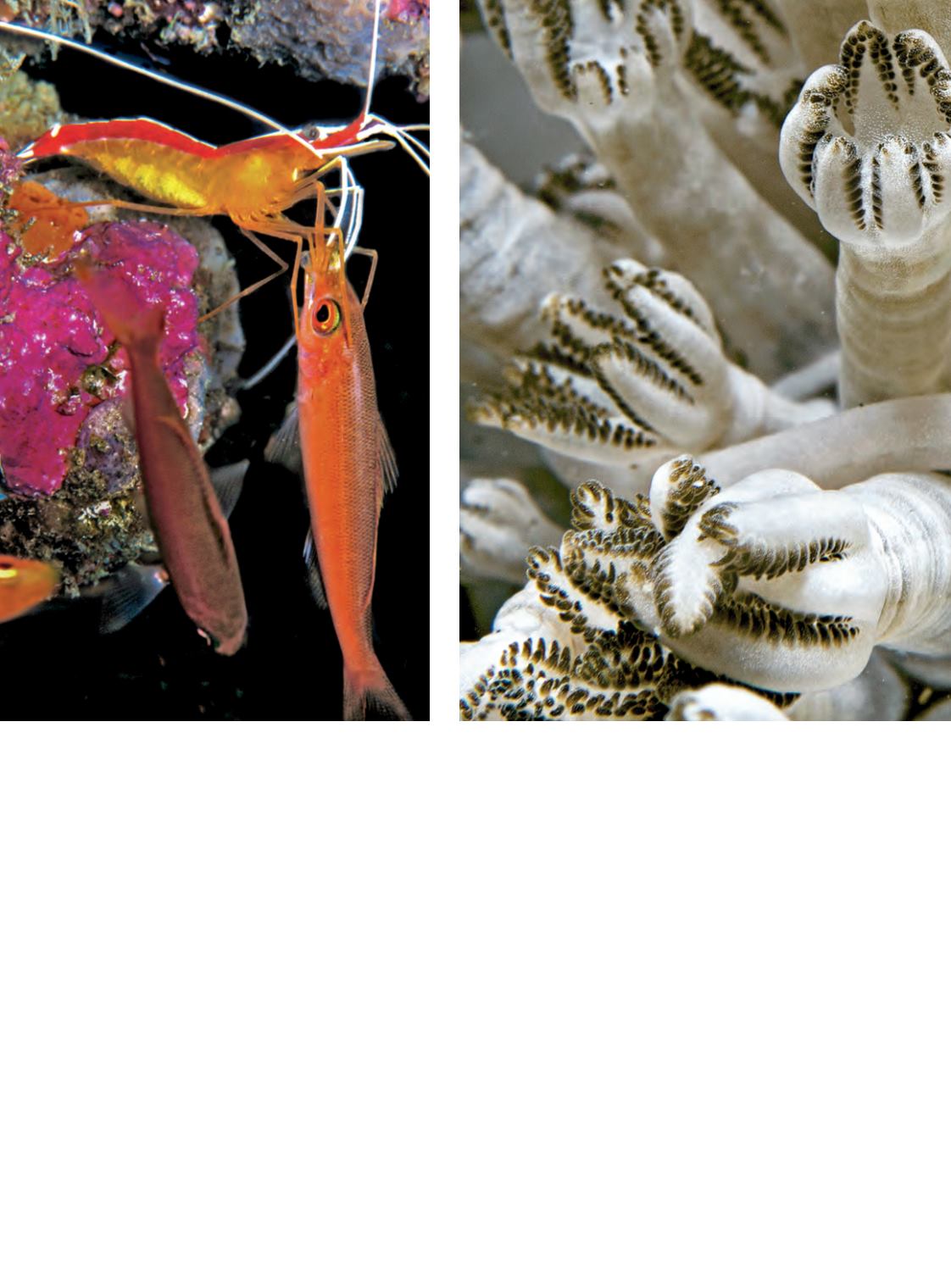
ND
//
Right after we married in the early 1990s we
lived in Bimini, Bahamas, for three years working on
Reef Fish Behavior: Florida, Caribbean, Bahamas. It
was one of those special times when, to borrow a line
from John Steinbeck, “the world spun in a well-greased
groove.” Six days a week we dived, usually the same
four reefs until we knew the animals by heart. We
also enjoyed research, which typically meant diving
into the stacks at the Rosenstiel School of Marine and
Atmospheric Science library at the University of Miami
when we were on the mainland. What an education!
To this day, behavior remains a primary focus.
Anna’s inquisitiveness, quick wits, good animal-
spotting eyes and skill with a video camera are essential
to our work. She’s also a lot of fun to be with. She’s
forever coming up with astute observations that I
completely overlook. To get an idea of how clever and
engaging she is, check out her blog, blennywatcher.
com; like Anna, it’s a hoot.
SF
//
I get a sense of your excitement from reading
your Encounters column in each issue of Alert
Diver. Take me on a “typical” Ned and Anna
DeLoach dive, where you are immersed in a critter-
rich environment that is particularly productive.
ND
//
Anna and I are enchanted by natural selection,
and there is no better place to get an eyeful of
biodiversity than underwater. To us it is all about the
hunt and the joy of discovery. Even today, after more
than 40 years of diving, I feel like I’m on the verge of a
great discovery every time I go underwater.
On a typical dive we don’t move around much,
especially if we’re working with a difficult subject.
“Dive slow, be patient, and dare to think small” is the
counsel we follow (and offer), whether we’re simply
observing wildlife or shooting video or stills. We’ve
found that many intriguing creatures are small, often
no larger than a thumbnail, and most are the dickens
IMAGING
//
S H O O T E R
96
|
WINTER 2014
From left: A cleaner shrimp extends its claws inside the tiny mouth of a plankton-picking fusilier to extract parasites for dinner.
Pulsating florets of Xenia coral are the exclusive home of the toothpick-sized barred xenia-pipefish (Siokunichthys bentuviai).


